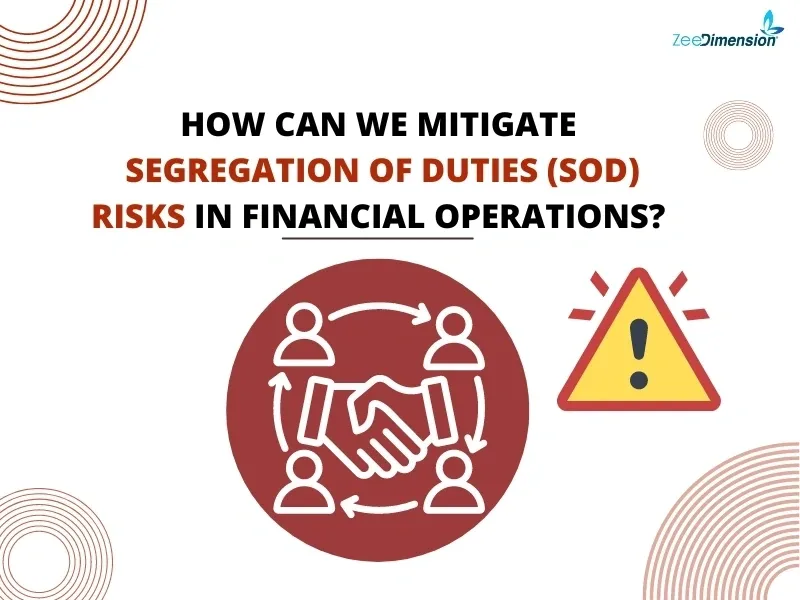
Introduction to Segregation of Duties (SoD)
What is Segregation of Duties (SoD)?
– A critical control mechanism to prevent fraud and errors in financial and operational processes.
– Ensures that no single individual has control over all aspects of a financial transaction.
Why is SoD important?
– Protects organizations from financial misstatements and operational inefficiencies.
– Enhances internal controls and safeguards against fraudulent activities.
Case 1 – User Creates a Vendor and an Invoice for the Vendor
What’s the risk?
– A user could create fictitious vendors and process fraudulent invoices, leading to unauthorized payments.
Control Measures:
– Separate the duties of vendor creation and invoice processing.
– Conduct regular audits of vendor master data for accuracy and legitimacy.
Case 2 – User Creates a Customer and an Invoice for the Customer
What’s the risk?
– The same user could manipulate invoice details, directing payments to personal accounts.
Control Measures:
– Separate customer account creation from invoice issuance.
– Implement automated checks to flag instances where the same user performs both actions.
Case 3 – User Creates a Purchase Order and Receipts the Goods or Services
What’s the risk?
– A user could order goods for personal use, bypassing oversight mechanisms.
Control Measures:
– Assign different individuals to purchase order creation and goods receipt.
– Use technology to enforce workflow approvals and ensure each step is reviewed.
Case 4 – User Creates a Credit Memo and Issues a Refund
What’s the risk?
– Unauthorized refunds could be issued, leading to financial losses and reputational damage.
Control Measures:
– Segregate the duties of creating credit memos and processing refunds.
– Review high-value refunds or frequent transactions to prevent fraud.
Case 5 – User Creates and Approves the Purchase Order
What’s the risk?
– Unauthorized or fraudulent purchases may bypass standard approval processes.
Control Measures:
– Require dual authorization for purchase orders.
– Regularly audit purchase orders to detect discrepancies or unauthorized transactions.
Case 6 – User Amends Vendor Bank Account Number and Pays Vendor**
What’s the risk?
– Payments could be redirected to unauthorized accounts, resulting in financial losses.
Control Measures:
– Enforce role-based access controls for amending vendor details.
– Implement alerts for changes in vendor bank details followed by payments.
Conclusion – Strengthening Your SoD Controls
Why is effective SoD crucial?
– It’s a cornerstone of a robust internal control environment.
– Helps prevent fraud, errors, and inefficiencies.
Next Steps:
– Regularly review and update SoD controls.
– Implement suggested measures to enhance financial integrity and operational transparency.
Call to Action
Ensure your organization is protected!
– Implement SoD controls to safeguard against financial and operational risks.
– Connect with us to learn more about enhancing your internal controls.
🎞️ 𝑭𝒐𝒓 𝒎𝒐𝒓𝒆 𝒅𝒆𝒕𝒂𝒊𝒍𝒔 𝒂𝒏𝒅 𝒊𝒏𝒇𝒐𝒓𝒎𝒂𝒕𝒊𝒐𝒏, 𝒇𝒐𝒍𝒍𝒐𝒘 𝒖𝒔 𝒐𝒏 𝒀𝒐𝒖𝑻𝒖𝒃𝒆 𝒂𝒏𝒅 𝒘𝒂𝒕𝒄𝒉 𝒎𝒐𝒓𝒆:







